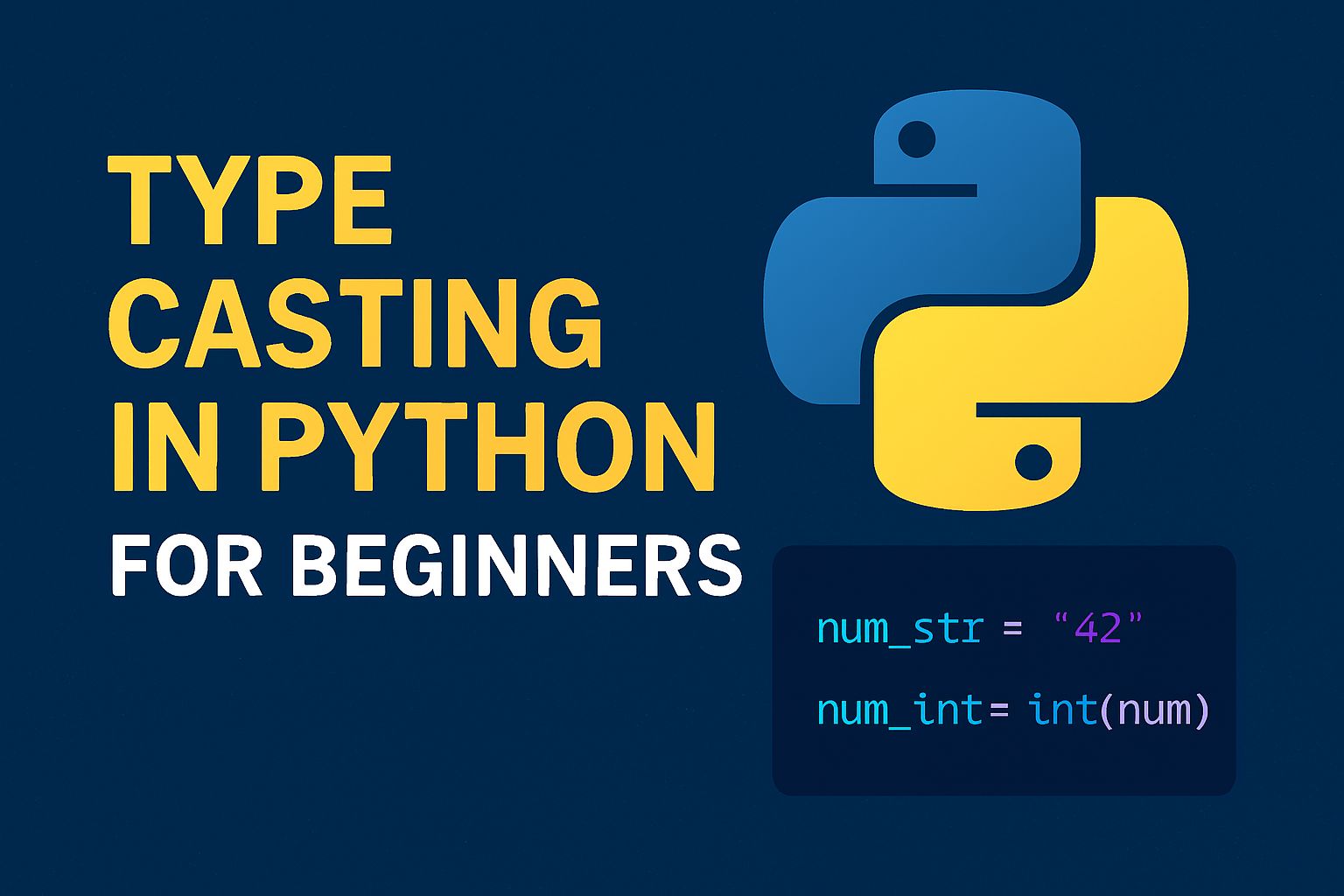Ever tried doing math with something Python sees as text? If yes, you’ve probably seen an error that left you scratching your head. That’s where type casting steps in—it’s a way to make sure Python sees things the way you want it to.
Let’s walk through what that means—without sounding like a textbook.
So, What Exactly Is Type Casting?
In Python, everything has a type. Some things are numbers. Some are text. Some are lists or even True/False values.
But here’s the twist: Python doesn’t always guess the type you expect. Especially when you take input from a user, Python will assume everything is a string—even if someone types a number.
Here’s a quick example:
age = input("Enter your age: ")
print(age + 5)Try that. You’ll get an error. Why? Because age is actually a string, and you’re trying to add it to a number. Python doesn’t mix types like that.
Here’s Where Type Casting Helps
Type casting is just a fancy way of saying: “Change this value’s type to something else.”
You can convert:
- Strings to integers:
int("10") - Integers to strings:
str(100) - Strings to floats:
float("3.14") - Anything into a boolean:
bool("hello")orbool(0)
Simple. Clean. And incredibly useful.
Quick Fix to That Earlier Example
age = int(input("Enter your age: "))
print(age + 5)Now it works. That one line—int()—tells Python, “Hey, this isn’t just some text, it’s a number.”
When You’ll Use Type Casting (Spoiler: A Lot)
Any time you’re:
- Taking input from users
- Reading numbers from files or APIs
- Formatting output
- Working with data that comes in unpredictable forms
You’ll need to cast values. It’s just part of coding. You won’t think twice about it after a while.
A Few Common Scenarios
Example 1: Numbers Stored as Strings
price = "99"
new_price = int(price) + 1If you forget int(), Python will give you an error. Cast it—problem solved.
Example 2: Showing Numbers in a Sentence
score = 87
print("You got " + str(score) + " points.")Without str(), that print line won’t work.
Example 3: Working with Decimal Numbers
weight = float("72.5")
print(weight * 2)If you’re storing user input or values from a spreadsheet, converting to float helps you calculate accurately.
Try This Mini Challenge
Here’s something to practice:
- Ask someone for their name (string)
- Ask for their current age (string, but cast it to int)
- Add 5 to the age and tell them how old they’ll be
- Show the result in a full sentence using
str()
Just those 3 steps will involve casting back and forth between strings and numbers.
Real Talk: It’s Not Complicated
Once you see it in action a few times, type casting becomes second nature. It’s one of those things in Python that sounds like a big deal at first—but turns out to be really approachable.
Just remember: if something gives you an error and you’re mixing types—check if you need to cast.
Watch It Explained Step-by-Step
If you’re more of a video learner, we walk through all of this in our beginner-friendly Python course on YouTube. Real code, real examples—no fluff.
▶️ Watch the Type Casting Lesson (Starts at 35:00)
Keep Going? We’ve Got You.
If this is clicking for you, awesome. You’re already thinking like a programmer. And if you want to go further, we’ve got a full hands-on Python course—from the very basics to building real apps.
👉 Learn Python From Scratch (Beginner to Advanced)
Also check out itlearn360.com for tools, examples, and support as you grow.












